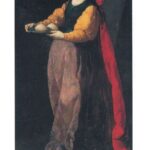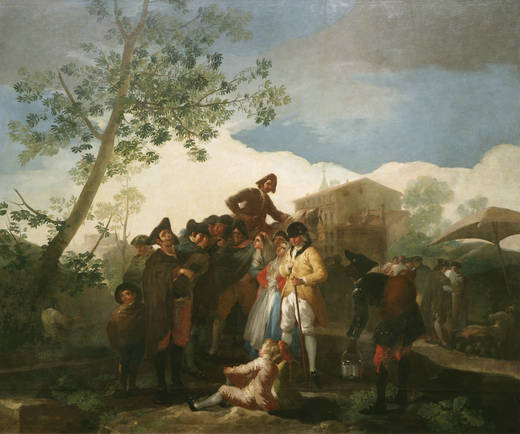
Between 1598 and 1664 Francisco de Zurbarán produced a series of paintings of virgin saints and martyrs following his own pictorial model which, under an apparent simplicity and direct portrait intention, allows for numerous interpretations. While these depictions show the saints with the appearance of being immaculate, they are not enveloped in the symbolism typical of saints and martyrs, such as the ecstatic posture gazing towards heaven, nor are they set in a pure environment that would indicate the sacred environment to which they belong. Furthermore, as they are not completely static figures, they cannot be classified as religious icons either.
Another characteristic feature of the series to which Saint Agatha belongs (Musée Fabre, Montpellier, France) is that they are not narrative paintings, but only refer to the events of their protagonists through their attributes, such as in this case the fact that they hold their own severed breasts on a tray. Zurbarán distances the figures from their sacred representation by isolating them against a neutral background and shows them directly in front of the viewer.
Collection: Images
Project: 10. Churches and religions in Europe., 11. Science and culture as representation in Europe.
Chronology: XVII
Scope: Baccalaureate, University
Link: http://www.tiemposmodernos.org/tm3/index.php/tm/article/view/865
Resource type: Image
Format: Oil on canvas
Source: Vincent, C. (2016). "Francisco de Zurbarán y el retrato sacro: Las santas vírgenes y mártires del maestro y su taller", en Tiempos modernos, nº 33, p. 248.
Language: Spanish
Date: 1635
Owner: Roberto José Alcalde López (Modernalia)
Copyright: ©Tiempos Modernos ©Cécile Vincent-Cassy
Abstract: Portrait of Saint Ageda made by Francisco de Zurbarán within his series of Santa Clara de Carmona
Image
Tags








